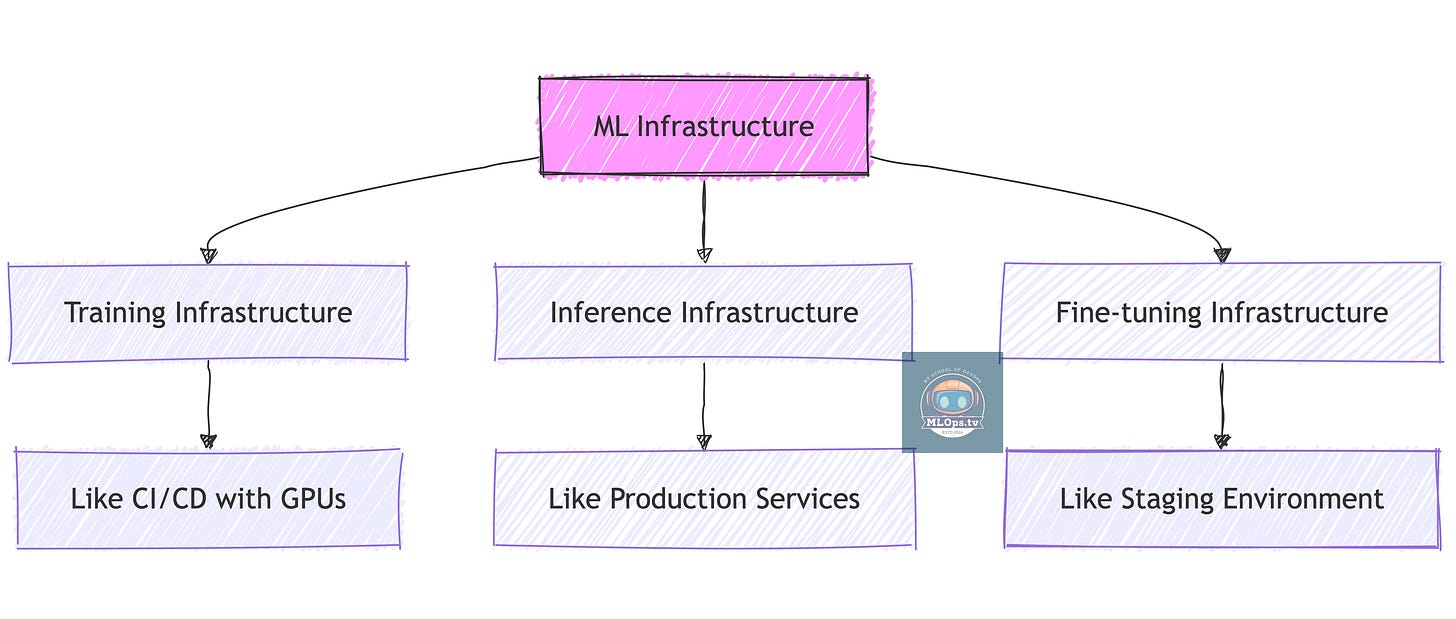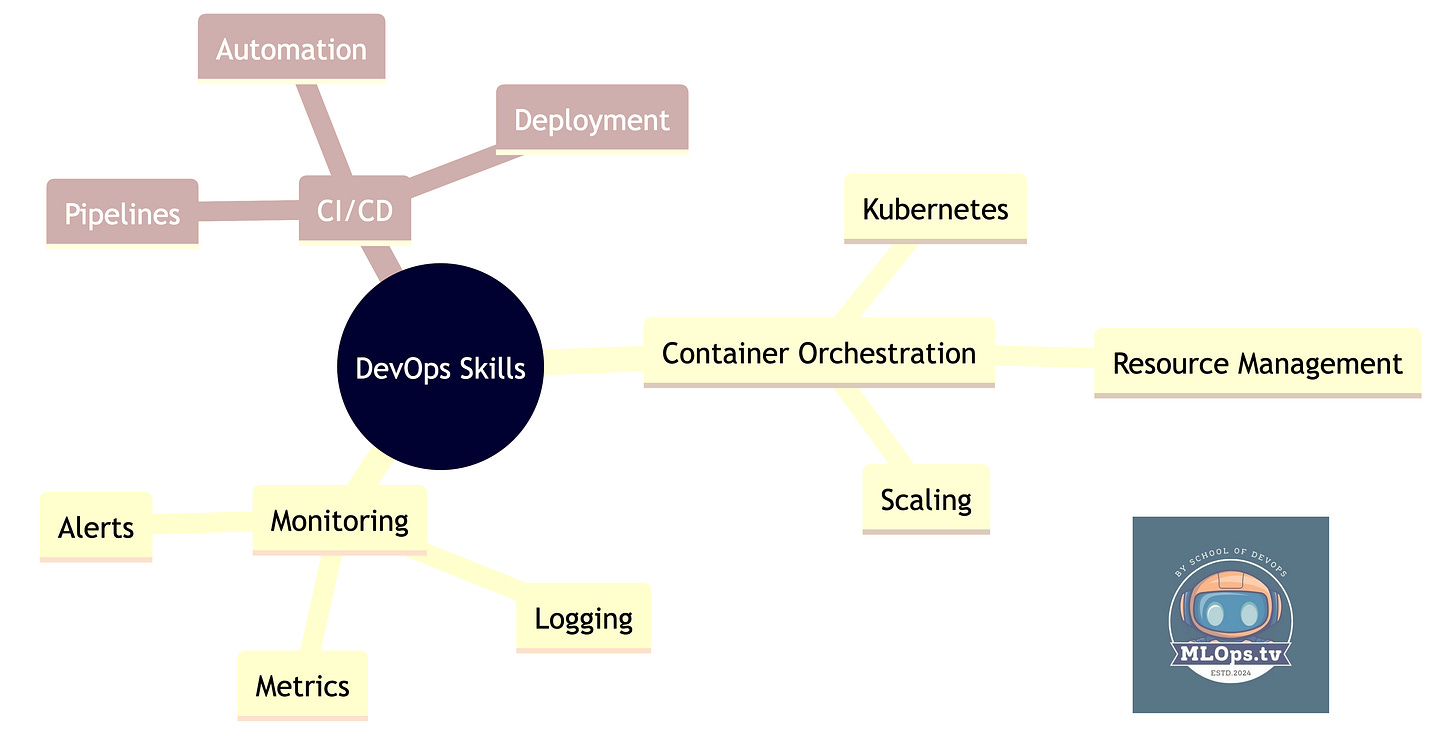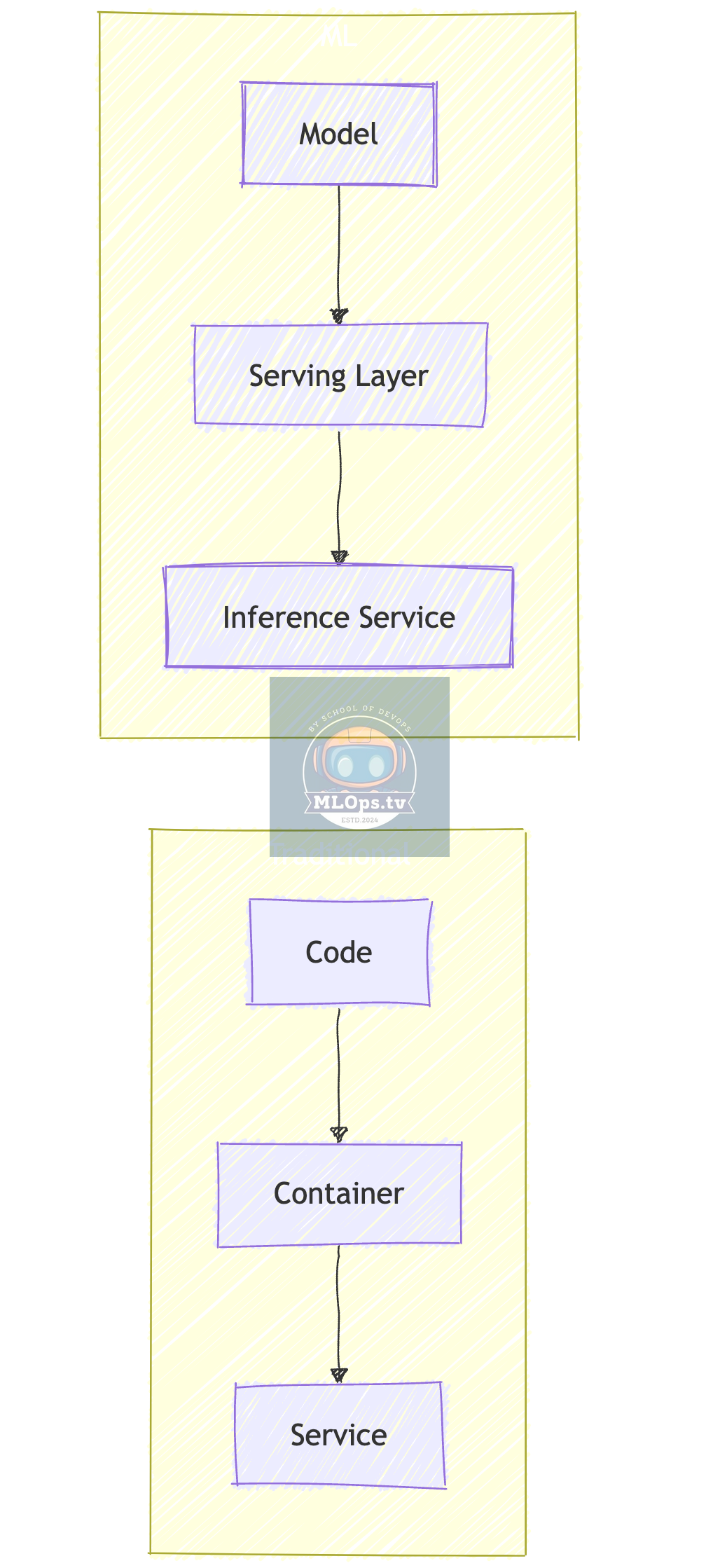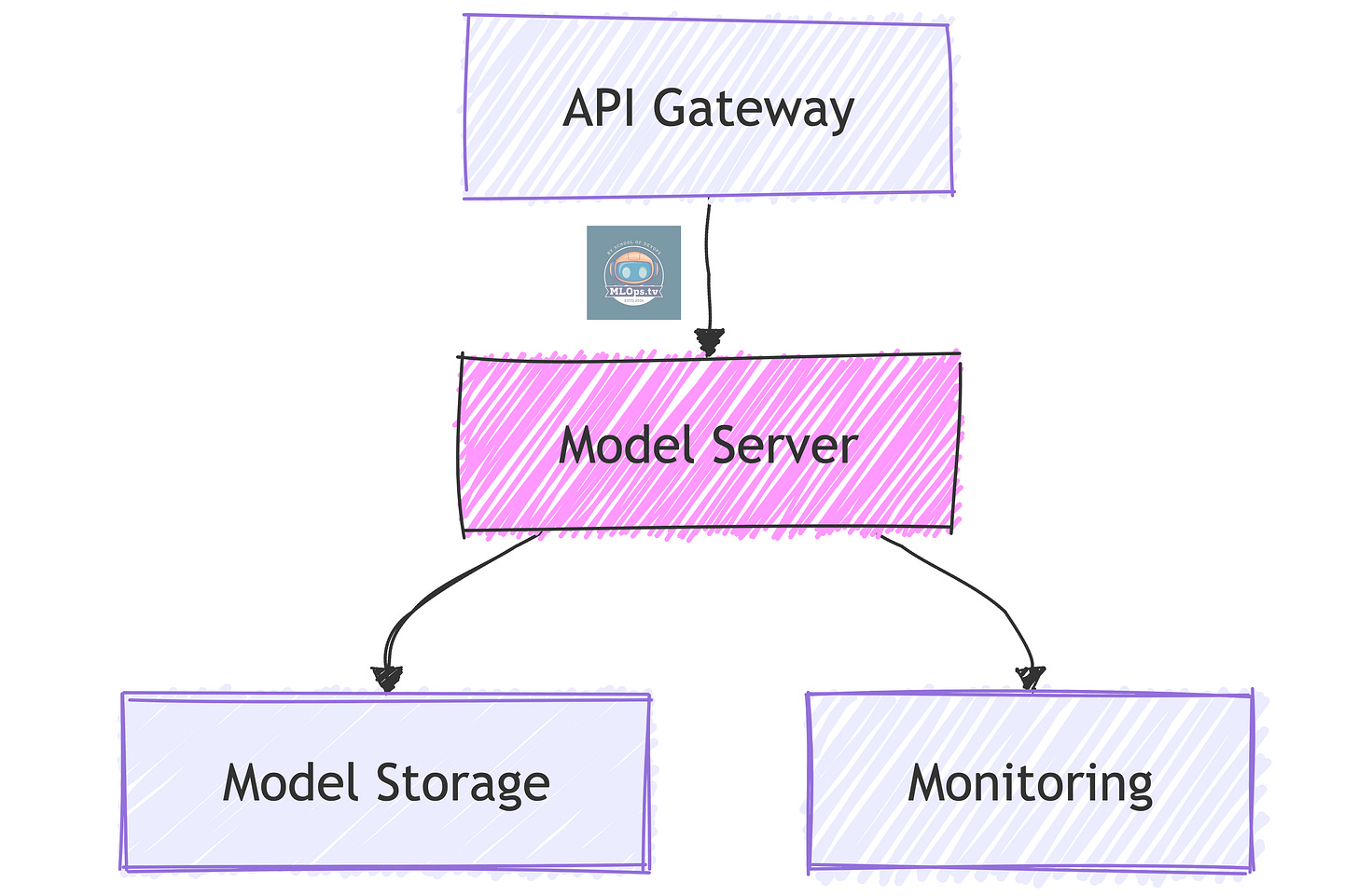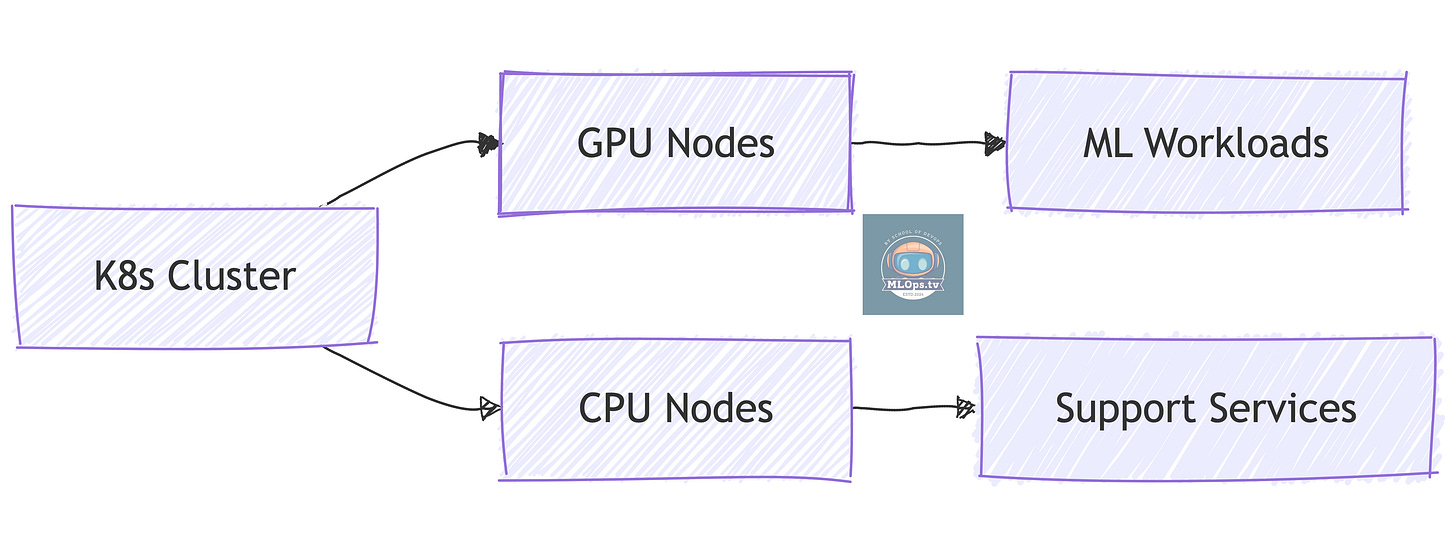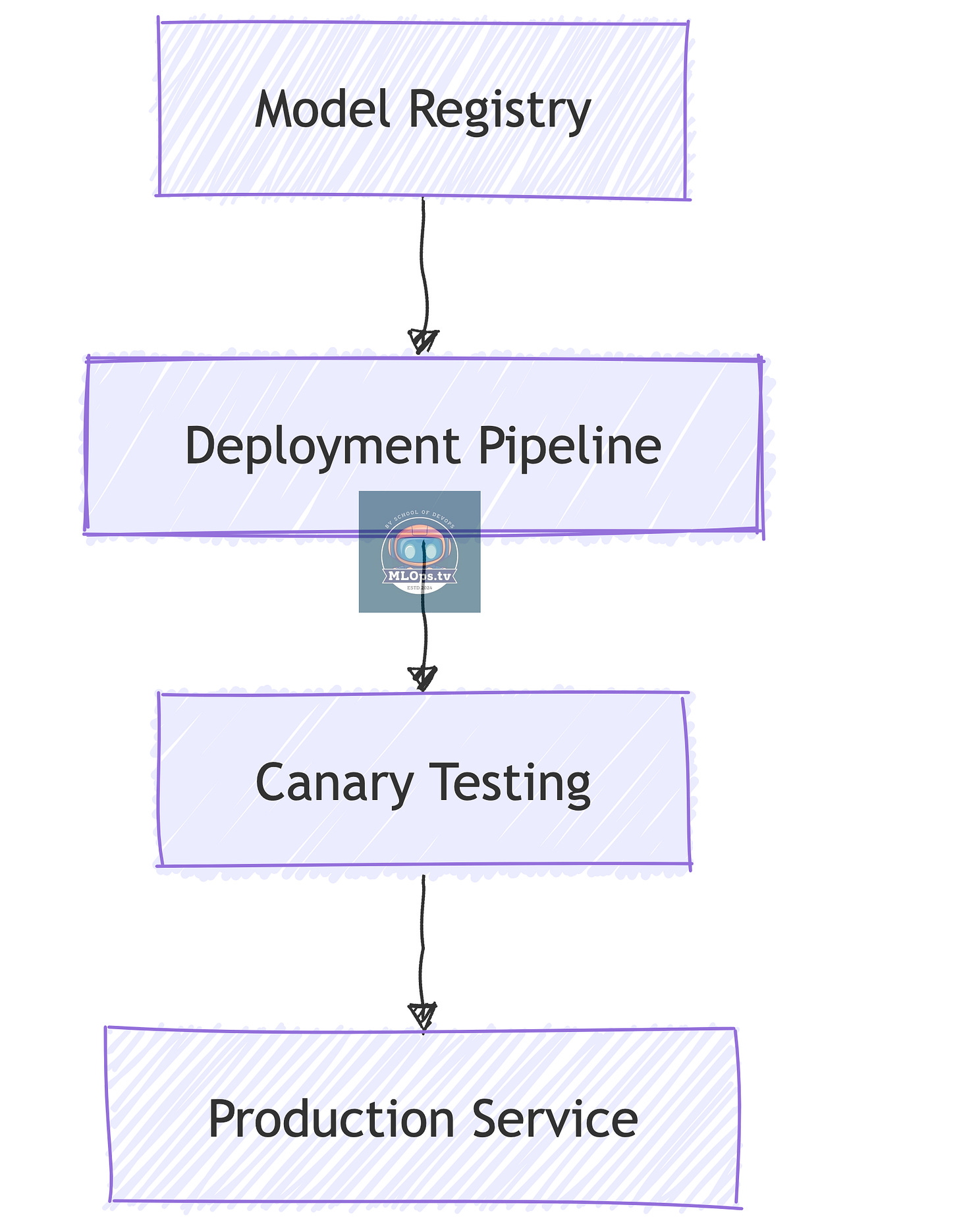Part VII - The New World of AI Engineering / ML Infrastructure
From Container Orchestration to AI Systems: A DevOps Engineer's Guide
"It's just infrastructure - but with different workloads and requirements."
- Kelsey Hightower
Remember when we moved from running apps on VMs to containers? The principles stayed the same, but the tools and patterns changed. That's exactly what's happening with ML/ AI Engineering Infrastructure. As a DevOps engineer, you already know 80% of what's needed - let's explore the 20% that's different.
What Are We Really Talking About?
Let's break this down into familiar terms:
Understanding Different ML Infrastructure Types
Type 1: Training Infrastructure
Think of this as your "build system" for ML models:
🏗️ Like CI/CD servers but with GPUs
🚀 Heavy resource usage but temporary
💡 Example: What OpenAI uses to train GPT models
⚠️ Not something most of us will build
Type 2: Inference Infrastructure
This is your "production environment" for ML:
🔄 Like running microservices but with specific requirements
📊 Consistent, predictable resource usage
💡 Example: Systems running ChatGPT or Claude
✅ What most of us will actually work with
Type 3: Fine-tuning Infrastructure
Think of this as your "customization environment":
🔧 Like staging environments where you modify existing apps
📈 Moderate resource usage
💡 Example: Adapting LLMs for specific use cases
✅ What many organizations need
What You Already Know That Applies
Your Transferable Skills:
🎯 Kubernetes management
📊 Monitoring and observability
🔄 CI/CD pipeline creation
🚀 Scalability patterns
🔒 Security practices
What's Different with ML/ AI Engineering Workloads
1. Resource Management
Key Differences:
🎮 GPU management instead of just CPU/RAM
💾 Much larger storage requirements
🔄 Bursty workload patterns
💰 Different cost optimization needs
2. Deployment Patterns
What's Different:
📦 Model artifacts instead of code
🚀 Specialized serving frameworks
🔄 Different scaling patterns
📊 Different metrics to monitor
What You'll Actually Build
1. Basic ML Service Infrastructure
Just Like Microservices, But:
🎯 Uses specialized model servers
💾 Needs efficient model storage
📊 Requires ML-specific monitoring
🔄 Different scaling triggers
2. GPU-Enabled Kubernetes Cluster
What You Need to Know:
🎮 GPU operator setup
🔧 Node labeling for GPU workloads
📊 GPU monitoring
💰 Cost optimization
3. Model Serving Pipeline
Similar to App Deployment, But:
📦 Model versioning instead of code
🔄 Different rollout patterns
📊 Different health checks
🎯 Different scaling metrics
Practical Starting Point
1. Start with CPU-Only ML Services
Why Start Here:
🎯 Familiar territory
📊 Learn ML patterns
💰 Lower cost
🔧 Simpler setup
2. Graduate to GPU Workloads
Natural Progression:
🎮 Learn GPU management
📈 Understand scaling
💰 Optimize costs
🔧 Handle complexity
Common Pitfalls to Avoid
Over-Engineering
🎯 Start simple
📈 Scale when needed
💰 Control costs
Wrong Focus
✅ Focus on serving patterns
❌ Don't build training infrastructure yet
🎯 Solve real problems
Ready to Start Building?
Join our upcoming cohort to learn ML infrastructure the DevOps way:
🎯 Register here for the next available cohort
📚 Get hands-on with ML infrastructure
👥 Learn from experienced practitioners
🚀 Build production-ready systems
"The best ML infrastructure is the one that feels familiar to operate."
Series Navigation
📚 DevOps to MLOps Roadmap Series
Series Home: From DevOps to AIOps, MLOps, LLMOps - The DevOps Engineer's Guide to the AI Revolution
Previous: LLMOps: Operating in the Age of Large Language Models
💡 Ready to build ML infrastructure? Register now for the next available cohort!



